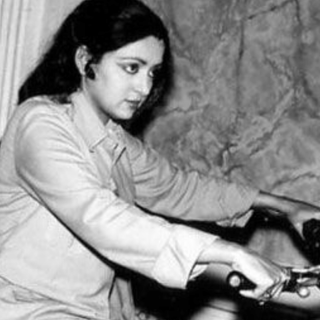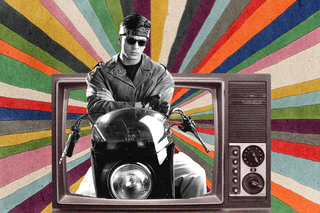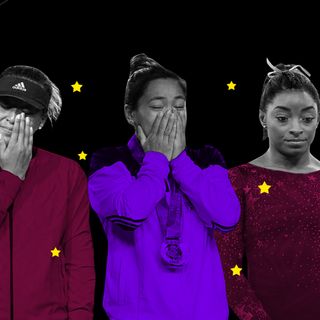
Can We Move On: From the Trope of the Bad Boy With a Good Heart
The trope has molded and encouraged toxic ideas around masculinity and romantic relationships.

In Can We Move On, we revisit old tropes and question whether they have any remaining cultural relevance.
Bollywood loves rehashing the trope of the goon with a golden heart. Leading actors across generations — from Amitabh Bachchan in Agneepath, to Shah Rukh Khan in Josh, to Aamir Khan in Ghulam, and more recently, Ranveer Singh in Kill Dil, and Sidharth Malhotra in Ek Villain — have played the role of protagonists, who bully and assault people, but are absolved of their pernicious actions simply because they either love their family, care for their best friend, or are willing to lay their lives down for their one true love.
“He kills people, is a drug mafia, punches random guys — but, but, his heart is pure so the lady just comes running to him,” Ira Shukla wrote. “Occasionally, there is a “maine uska dil dekha hai” [“I have seen his heart”] speech after which they get married and he goes back to stealing bikes. How nice,” she added.
Having said that, there is a “glass-half-full” side to this trope. The redemption arc of a character, who could very easily have been painted as quintessentially evil, does further the idea that human beings exist in shades of gray. Many of the characters embodying this trope are portrayed as being motivated to pursue a life of crime either as a consequence of experiencing childhood trauma or because their socioeconomic circumstances didn’t leave them with too many options. However, despite being around for decades, the trope has done little to change how society views those from less privileged backgrounds, and more to further other harmful notions.
It has been instrumental in molding — or, at the very least, encouraging — toxic ideas around masculinity, and the way we perceive hetero-romantic relationships.
Looking at abusive — and even criminal — behavior through rose-tinted glasses has led us to romanticize violence and equate it with passion. A 2020 study termed the concept “angromance,” meaning “angry romance.” In 2003’s Tere Naam, Salman Khan’s portrayal of Radhe Bhaiya — a goon, who stalks and harasses a woman into falling in love with him — gained him a cult following among young men, who immediately followed his trademark hairstyle.
Related on The Swaddle:
The Stereotype That Abusers Are ‘Bad’ People Can Prevent Survivors From Recognizing Real‑Life Abuse
A more recent example of the phenomenon is Kabir Singh, which redeemed the titular character — a “violent, destructive misogynist” who assaults people — as a “man with ‘a good heart’ who ‘loves purely’ and ‘wears his emotions on his sleeve,’” as BBC News described it.
These reel-life portrayals of violence — both within and outside relationships — and their subsequent rationalization, impact the real lives of real people. “If I’d watched this movie [Fifty Shades of Gray] when I was in an abusive relationship a few years ago… I would have said to myself: ‘If you stay with him despite his abuse, he will change eventually. You will be the one to change him,'” Emma Marie Smith writes. “I was impressionable, vulnerable, and in love. I would have fallen for this idea of what romance should be,” she continues.
Moreover, furthering the idea that no matter how abusive the male protagonist might be, the love of his female partner will inspire him to magically change his ways, puts the onus of “reforming” men on women — burdening them with more emotional labor than they already perform by virtue of simply existing in a patriarchal society governed by heteronormative values and roles.
In addition, as the 2020 study states, romanticizing the idea of the “bad boy” waiting to be transformed by love has also led us to idolize toxic masculine traits that characters embodying the trope often exhibit. In 2017’s Bareilly Ki Barfi, audiences are expected to root for the male protagonist Chirag (a bully played by Ayushman Khurana) over Pritam Vidrohi (an honest, hardworking character played by Rajkumar Rao). In order to establish the protagonist’s masculine supremacy, the script has him mocking Pritam for being a saree salesman — suggesting that selling women’s clothes makes him less masculine, and therefore, less deserving of the audience’s respect and support, and of the female protagonist’s affection.
The bad-boy-with-a-good-heart trope has existed since before I was born, and I have been watching it play out on screens long before I was able to identify problematic content. And problematic is all that’s there to it — not only does it negatively impact social consciousness, but it’s also not as fresh as it, perhaps, may have been decades ago. Can we move on already?
Devrupa Rakshit is an Associate Editor at The Swaddle. She is a lawyer by education, a poet by accident, a painter by shaukh, and autistic by birth. You can find her on Instagram @devruparakshit.
Related


The Buzz Cut: Women Athletes Continue to Shape a More Inclusive Definition of Greatness
